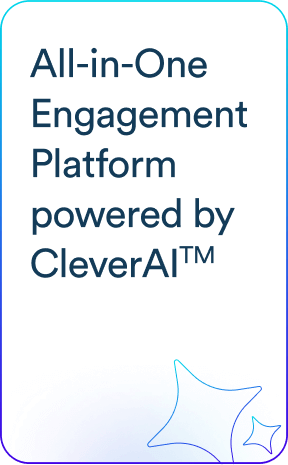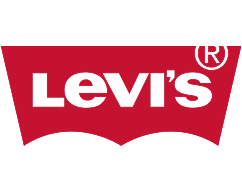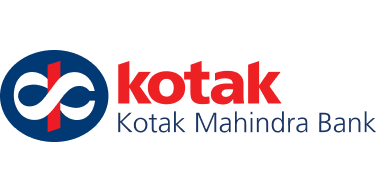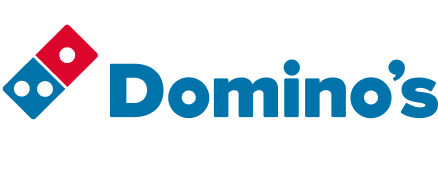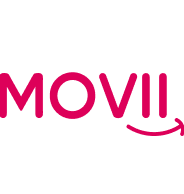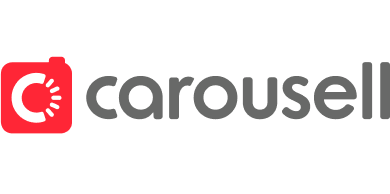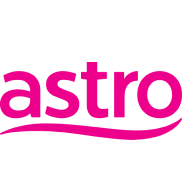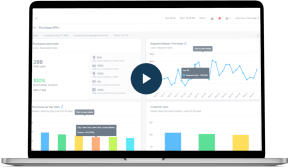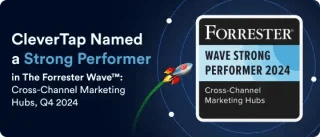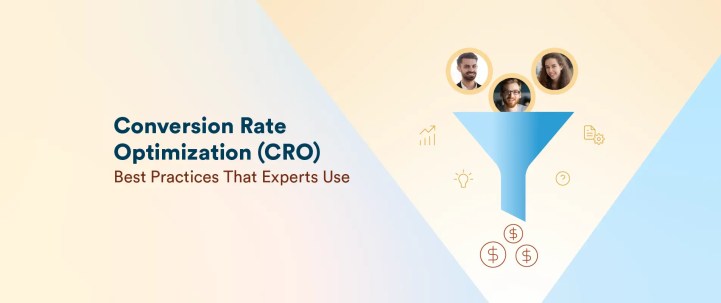How do you convert incoming traffic on your website?
This question constantly confuses marketers who see a lot of traffic coming in, but conversions into leads or revenue are still low. Conversion rate optimization (CRO) allows businesses to maximize ROI from their user acquisition efforts. It ensures more people take the desired action once they come to your digital properties.
However, many companies tend to focus mainly on customer acquisition without optimizing for conversions. According to research, businesses spend $1 on CRO for every $92 spent on customer acquisition.
This needs to change. CRO gives a tremendous competitive advantage. If you’re unsure about how to start and what to do, these conversion rate optimization best practices will help you build a continuous conversion optimization loop:
8 Conversion Rate Optimization Best Practices to Drive Conversions
Some of these conversion rate optimization best practices lead with logic, while others lead with technology. Below are the eight best practices to keep in mind when doing CRO.
1. Dive Deep Into Your Qualitative and Quantitative Analytics
Quantitative data is all about the performance data, which can be analyzed.
Has the page’s performance changed? The insights you’re seeking answers to are simple:
- How did a user enter on a website?
- What channels are helping us convert?
The Google Analytics user acquisition report will let you access this data. There are other ways to get to these insights, for example:
- Funnel Analysis: Use funnel analysis to understand how people flow through your website and where they drop off
- Form Analysis: How people are using your forms, where people are dropping off from forms, and what they’re engaging with
- Heatmaps: How people are putting their cursors on certain areas on your web page and getting confused, or understanding how to use the page
- User Recordings: Understand and look at how users are navigating
Did you know? 24me leveraged CleverTap’s analytics tools like Flows and Funnels to track user behavior, leading to a 6% increase in tutorial video views.
People skip user recordings because they may not want to engage at that level. However, they’re a gem when you’re trying to understand where users are rage-clicking or where users abandon the website.
Related: These 12 strategies help prevent cart abandonment.
Qualitative data is in the unstructured format, which needs subjective analysis. Post-purchase or exit-intent surveys can help collect this information. You need to seek the right information, for example:
- What did users experience on the website?
- What brought them to the website?
- Why are they leaving?
- Why aren’t they doing the desired action we expect from them?
Getting customers to talk about these gives you decent qualitative insights. On the other hand, customer service interviews and competitor reviews are a good source to get qualitative data.
If you’re not doing this, you’re simply leaving CRO opportunities on the table.
2. Develop a Cross-Channel Conversion Action Plan
It involves looking into all the essential metrics on a website and how they convert. First, identify your top traffic sources and how they’re converting. Are the conversions where they should be?
Dig into the average website conversion rate, and recognize the traffic sources falling below. The whole point of doing this is identifying the top traffic channel and channels with low traffic but a high conversion rate.
High-traffic channels with low conversions present a great opportunity to perform CRO, as traffic is already there; the better you optimize, the higher the conversion will be. You need to bring in more traffic for channels with high conversions.
In this research, you’ll also be able to determine precisely why some pages convert better and apply similar strategies to low-converting pages. As a part of this process, check out the top exit pages report on Google Analytics, which shows people dropping off. Evaluate these pages to understand the reason behind these drop-offs and what you can do to engage visitors differently.
Check for the following things on exit pages:
- Is the CTA aligned with the user journey?
- What is the level of commitment for that CTA? Is it too aggressive?
- Are you offering both micro and macro conversion options?
The lower the exit percentage for each page, the more people will convert on your website. Evaluate this consistently and adopt cross-channel marketing strategies to convert better.
3. Lay Out The Conversion Goals Before A/B Testing
In your research, you’ll likely have a big 100 test showing a sizeable impact. Or, you come back with a complete redesign plan. Complete redesign plans are uncommon; most tests focus on incremental changes. However, before you use your research findings, ensure the optimization strategy is aligned with conversion goals.
Start the roadmap by identifying three types of goals:
- Business or Website Goals: Identify what a business expects from CRO.
- Strategic Goals: What is the main KPI that meets the business goal? Is it to get more demos, signups, or purchases?
- Tactical Goals: What actions would you take to reach your strategic goals? For example, if the strategic goal is to reduce distraction on your hero section, the tactical goal will be to remove competing CTAs.
After identifying these goals, the next step is to start with A/B testing, sometimes called split testing. This is where you create two versions of a web page: version A (the control) and version B (the variant). Split the traffic 50:50. See how users react and which page converts better and more effectively. Form fills, subscriptions, purchases, or simple bounce rate can give you insights into the page that’s performing better.
This data-driven approach eliminates gut feel. When done right, experimentation maximizes ROI: you reuse the best-performing elements rather than creating new campaigns blind.
Below are a few conversion rate optimization best practices to optimize your website through A/B testing.
- Identify Variables. Test one element at a time for precise results on the headline, CTA button text/color, image, layout, price, etc.
- Define Clear Success Metrics: Clearly define your conversion rate metrics, whether you want to increase purchases or sign-ups. Ensure sufficient traffic to reach statistical significance.
- Test Combinations of Changes: Use multivariate testing if you need to test combinations of changes.
- Leverage Technology Intelligently: CleverTap’s built-in A/B testing suite runs experiments on mobile app screens, emails, or push notifications.
- Run Tests for a Realistic Time: Stop when a winner is statistically clear. Then implement the winner and iterate.
- Maintain a Testing Roadmap: Test one campaign element (e.g. subject line), then another (e.g. image), continuously optimizing.
Test everything from CTA color to the timing of in-app message. For instance, testing CTA buttons (color/size/text) is critical. It’s the most important element impacting conversions.
Using A/B testing and analytics, MyPostcard improved signups by 318% in a year and boosted user value by 16% in a month.
4. Optimize Forms for Higher Conversions
Every extra field in a form is a roadblock. Long or confusing forms dramatically increase abandonment. Studies show that 27% of users quit a form because it’s too long, and 29% abandon it due to security concerns. Forms are often the final step in lead capture or checkout, so even small frictions cause significant losses. Optimized forms bridge the gap between interest and conversion, turning a frustrated visitor into a converted customer.
It’s best to follow these practices to optimize forms for conversions:
- Reduce Fields: Only ask for the information you need. Each extra field can drop conversion. According to this research, as the number of form fields increases, conversion rates decrease slightly. Use progressive profiling (asking for more info in stages) to limit initial friction.
- Design Forms Intelligently: Include inline field validation, helpful placeholders/examples, and checkboxes for standard options (e.g., “Same billing address”). This reduces user error.
- Enable Guest/Skip Options: For e-commerce, allow guest checkout without mandatory account creation to reduce abandonment.
- Progress Indicators: If you must have a long form (e.g., a multi-step application), display a progress bar. Knowing how much is left reduces anxiety.
- Use Conditional Logic: Show/hide fields based on previous answers. This keeps the form as short as possible for each user.
- Secure and Trust Indicators: To reassure users, show an SSL padlock, trust badges, or privacy notes next to forms (especially for payment information).
5. Use Persuasive Copywriting and Psychological Triggers
What you say and how you say it make or break a sale. Persuasive copy and psychological triggers like urgency, social proof, authority, and reciprocity tap into human decision-making biases.
Neuromarketing research indicates that minor tweaks in wording yield large conversion lifts. Compelling copy aligns with customer motivations and nudges them toward conversion.
To do it effectively, you need to convey your messaging logically. If this is an e-commerce sale, include reviews or “best-seller” badges. These help establish trust, and when accompanied by urgency or scarcity indicators, they increase the website conversion rate and its velocity. Some websites show their live social media feed on the website where shoppers have mentioned them or advocated for them.
Here are some ways to write a persuasive copy:
- Write Clear CTAs: Always write CTAs in active voice and use action-oriented verbs as much as possible.
- Focus on Customers: Write copy that centers around customers’ pain rather than the features you intend to cover. Tell the customer how you solve their pain.
- Include Authority: Let your copy convey authority, which attracts readers and makes it safe for them to trust you. For example, “50 Million Books Sold,” or “Learn Coding From The First Engineering Hire At The Company.”
Most importantly, the copy of messaging sent across different channels, like in-app, push, email, or SMS, must be hyper-personalized to the buyer and their use case.
Let’s take a deeper look at what to personalize and how:
6. Leverage Personalization and Dynamic Content
Personalized experiences feel more relevant and engaging, so users are likelier to convert. According to a study, most consumers want personalization. 73% expect it, 76% feel disappointed without it, and 78% are more likely to keep buying from brands that offer it.
Personalization might mean showing product recommendations based on browsing history, emails addressed by name with tailored offers, or dynamic web content that changes per user. Personalization transforms generic traffic into high-value conversions, significantly boosting the fintech conversion rate and e-commerce conversion rates, where a one-size-fits-all approach often falls short.
What to personalize:
- Product recommendations
- Email subject line, copy, and CTA
- Dynamic banners
- In-app messaging and push notifications are sent to different customer segments
How to personalize:
Data makes personalization possible. Look into the purchase history, browsing behavior, and preferences of shoppers. Personalization is about delivering the right message to the right person at the right time. CleverTap’s funnel analytics lets you see precisely where a buyer dropped off, or what might have caused a cart abandonment.
Align messaging to these events in the user’s lifecycle. Send welcome push notifications to new users and loyalty rewards to returning customers. Test these messages with constant A/B testing to improve further.
A leading UAE fashion brand used CleverTap to send personalized push messages with product details. This led to 4× more conversions and a 300% increase in yearly revenue.
7. Optimize for Trust and Credibility
If a user doubts your site’s security or legitimacy, they’ll abandon it. Indeed, 17% of shoppers cited “I didn’t trust the site with my credit card information” as a reason for cart abandonment.
To convert, every signal must reassure the customer. An eye-catching guarantee or verification badge sways hesitant buyers. In short, building credibility removes psychological friction from the purchase decision.
Below are a few best practices you should consider while optimizing for trust.
- Display Trust Seals: On checkout pages, show SSL icons, payment gateway logos (Visa, PayPal), or recognized certification seals.
- Use Recognizable Branding: Prominently display certifications (BBB rating, industry awards). If well-known clients use your service, showcase their logos.
- Clear Security Communication: Include brief notes like “Secure encrypted checkout” next to payment fields.
- Transparent Policies: Provide easy-to-find refund, shipping, and privacy information. A sentence like “Free returns within 30 days” increases confidence.
- Consistent UI: A polished, professional site design builds credibility when busy, amateurish sites turn users off.
Related: 25 Strategies to Increase App Conversion Rate
8. Reduce Friction in the Checkout and Lead Capture Process
Many things in the checkout process create friction for a prospect to cross the conversion mark. For example, mandatory account creation, excessive delivery fees, and long forms to fill out (asking repetitive information).
Minimize steps using a one-page or simplified multi-step checkout. Provide a checkbox that lets users copy their delivery address to the billing address. Let shoppers complete orders without creating accounts or defer account creation prompts until after purchase.
Don’t surprise users with shipping and taxes in the final stages of the checkout. Be transparent about them early so unexpected high fees don’t trigger abandonment. The payments page includes buy now, pay later (BNPL), credit cards, and other payment options that are popular among your audience.
Using CleverTap to Boost Your CRO Efforts
CleverTap’s platform is built to power the above CRO strategies with powerful analytics and engagement tools. It is an all-in-one customer engagement platform that empowers brands to optimize user journeys and improve conversion outcomes at every touchpoint.
Some key features of CleverTap include:
- Real-Time Behavioral Segmentation: Instantly build segments based on live user actions, such as users who added to cart but didn’t buy. This precision targeting drives more relevant campaigns.
- Lifecycle Optimizer: Guided retention frameworks like the lifecycle optimizer let you define stages like acquisition, activation, engagement, etc. Test what moves users to the next stage and keep optimizing the user journey.
- Advanced Funnel Analysis: Easily create custom funnels (up to 8 steps) to see where users drop off. Identify weak spots and measure lift after fixes.
- Hyper-Personalized Engagement: Use unified user profiles to tailor messages at the individual level. Dynamic content like name, past items, and predicted interests) can be merged into emails, SMS, and in-app messages.
- A/B and Multivariate Testing: Built-in experimentation tool lets you test variations of messages, UI elements, and journey paths to automatically discover the top-performing version (and apply the winner).
- TesseractDB™: CleverTap’s high-performance data engine, TesseractDB™, handles billions of events in real time, ensuring analytics and segmentation remain fast and scalable as you grow.
- Omnichannel orchestration: Coordinate campaigns across push, in-app, email, SMS, WhatsApp, and web with CleverTap’s omnichannel orchestration tool. Create unified cross-channel Journeys, ensuring the right message reaches each user in their preferred channel.
- RenderMax™: Proprietary delivery tech RenderMax™maximizes push notification rendering success across all devices, even those with strict OS limits. More notifications rendered mean more chances to convert.
Beyond these features, you get the IntelliNODE AI optimizer that tests multiple journey variations and learns the paths that convert best for different segments. The platform has built-in models to rank users by recency, frequency, monetary value analysis (RFM), and predicted intent. This allows you to target high-intent users through your campaigns.
CleverTap’s analytics dashboards give you a complete overview of conversion funnels, revenue, and campaign ROI in real time. The CRO impact is instantaneous, allowing marketers to iterate faster.
Use CleverTap to test, analyze, and improve every user journey.
Accelerate Conversions with CRO Best Practices
Optimizing conversion rates isn’t a run-and-done task. It’s a continuous process that requires a holistic and data-driven approach. The performing strategies need to be amplified and duplicated, while the low-performing ones are continuously optimized.
CleverTap provides the right technology support to scale these optimization initiatives. It also supports the best practices shared above. Start experimenting with these strategies to increase your conversion rates.
Ready to optimize every touchpoint in your user journey? Book a demo with CleverTap and start converting smarter—at scale.
Mrinal Parekh 
Leads Product Marketing & Analyst Relations.Expert in cross-channel marketing strategies & platforms.
Free Customer Engagement Guides
Join our newsletter for actionable tips and proven strategies to grow your business and engage your customers.

